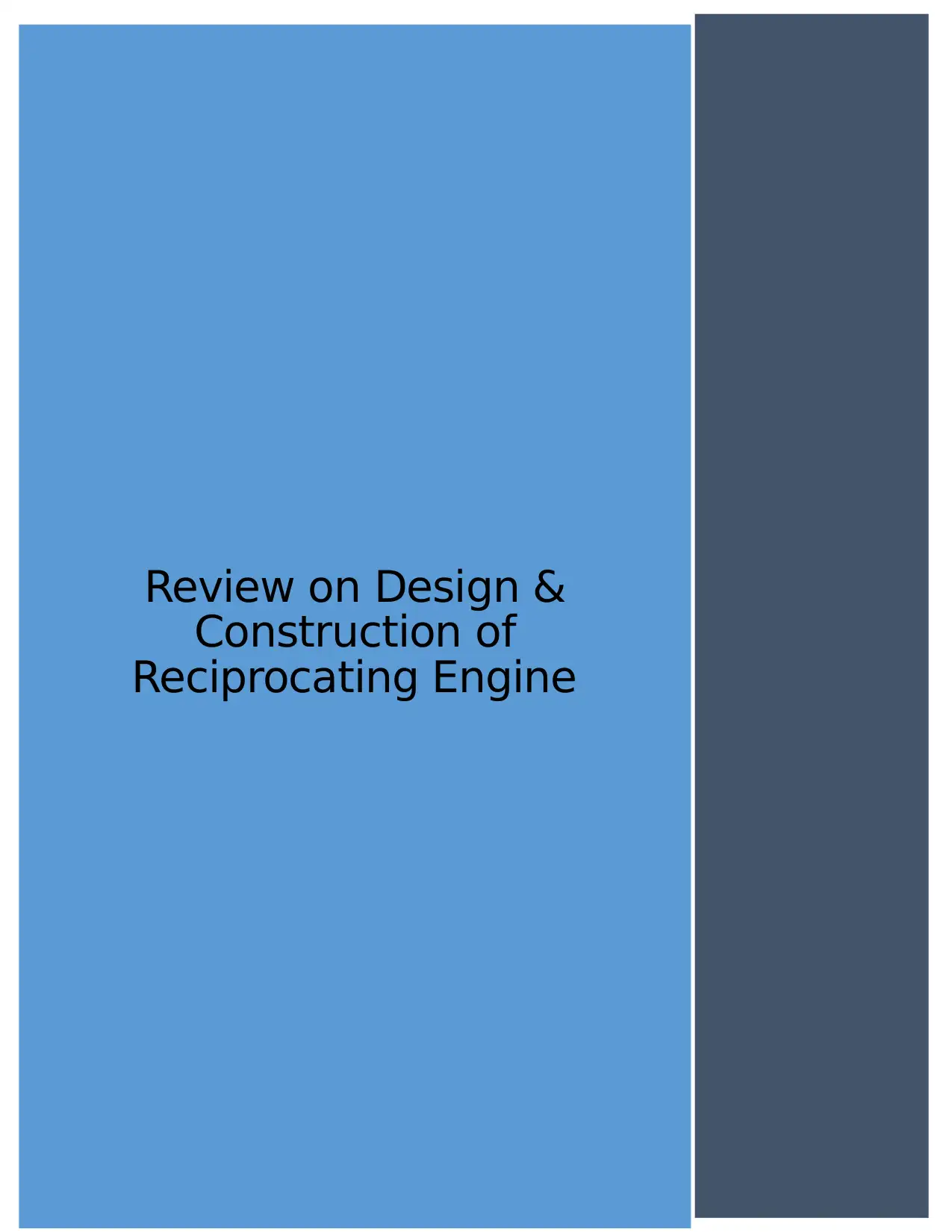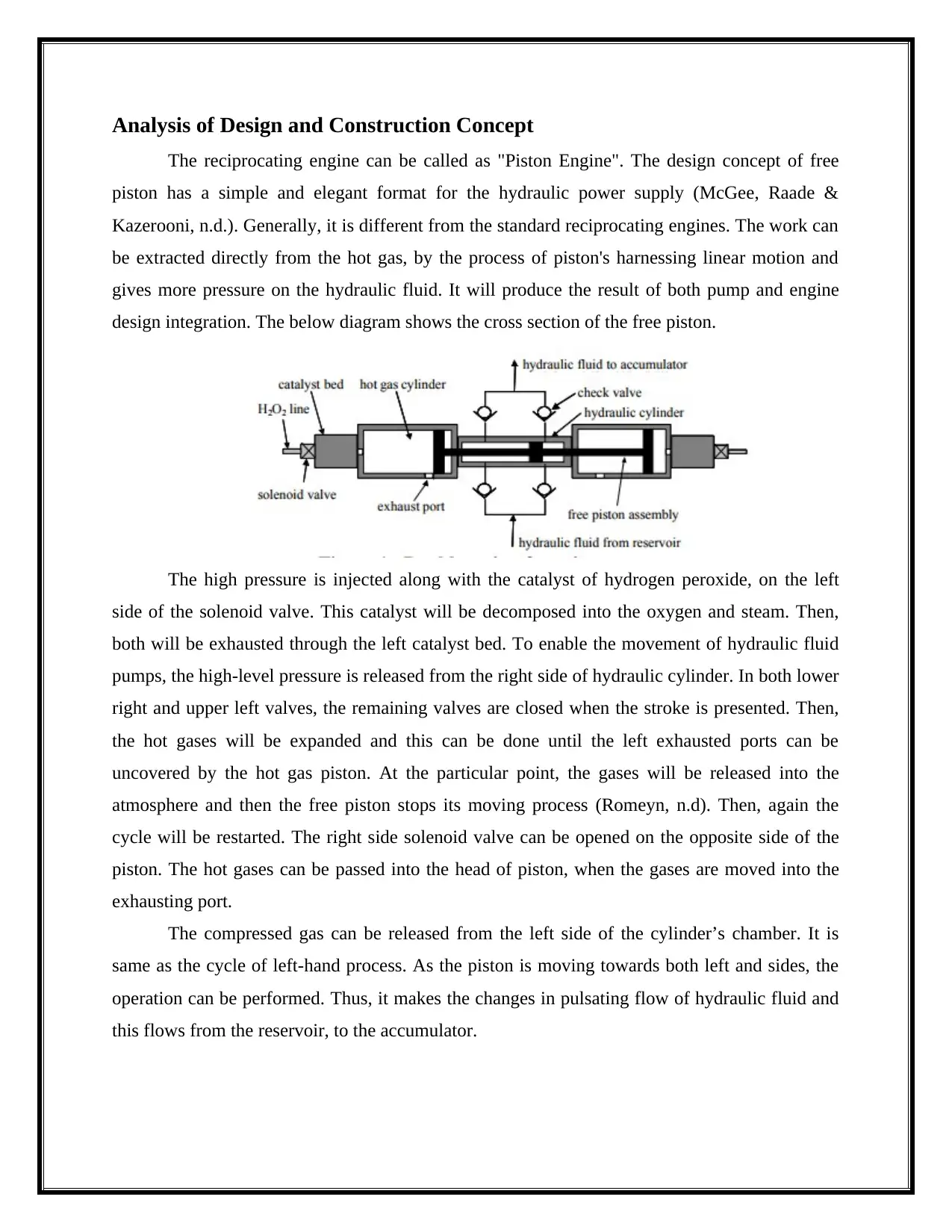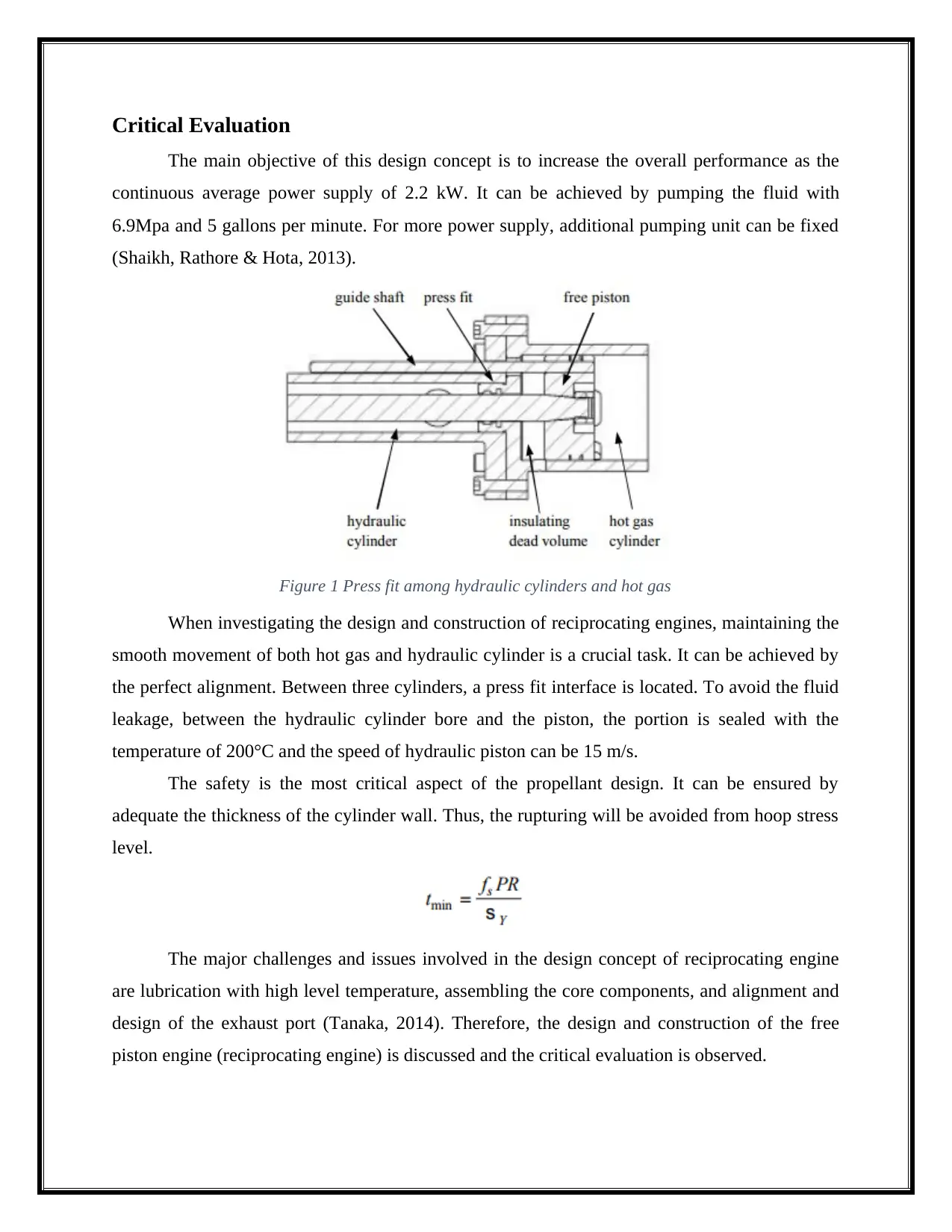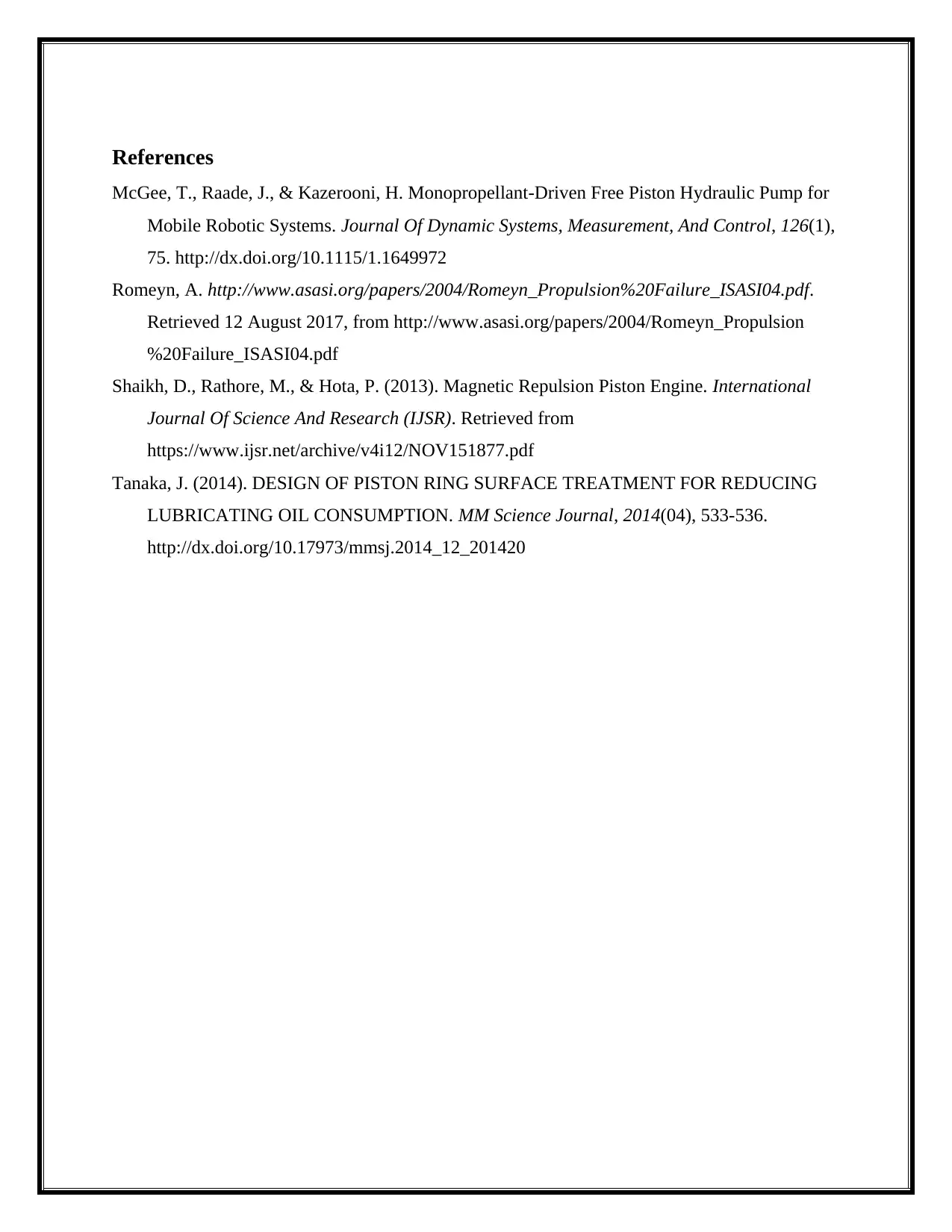Design and Construction Review: Reciprocating Engine Analysis
VerifiedAdded on 2020/03/04
|4
|766
|339
Report
AI Summary
This report provides an analysis of the design and construction of reciprocating engines, specifically focusing on the 'free piston' engine concept. The report discusses the engine's operational principles, highlighting its unique approach to hydraulic power generation through the direct harnessing of the piston's linear motion. The design integrates a pump and engine, extracting work from hot gas to pressurize hydraulic fluid. The report details the engine's operational cycle, including the role of solenoid valves, catalyst beds, and the expansion of hot gases. Furthermore, it evaluates the design concept, emphasizing the objective of achieving a continuous average power supply of 2.2 kW. Critical aspects of the design, such as the press fit interface between hydraulic cylinders and hot gas cylinders, along with safety considerations like cylinder wall thickness, are also addressed. The report concludes by acknowledging challenges in lubrication, component assembly, and exhaust port design. The document references several sources to support the analysis.
1 out of 4










![[object Object]](/_next/static/media/star-bottom.7253800d.svg)